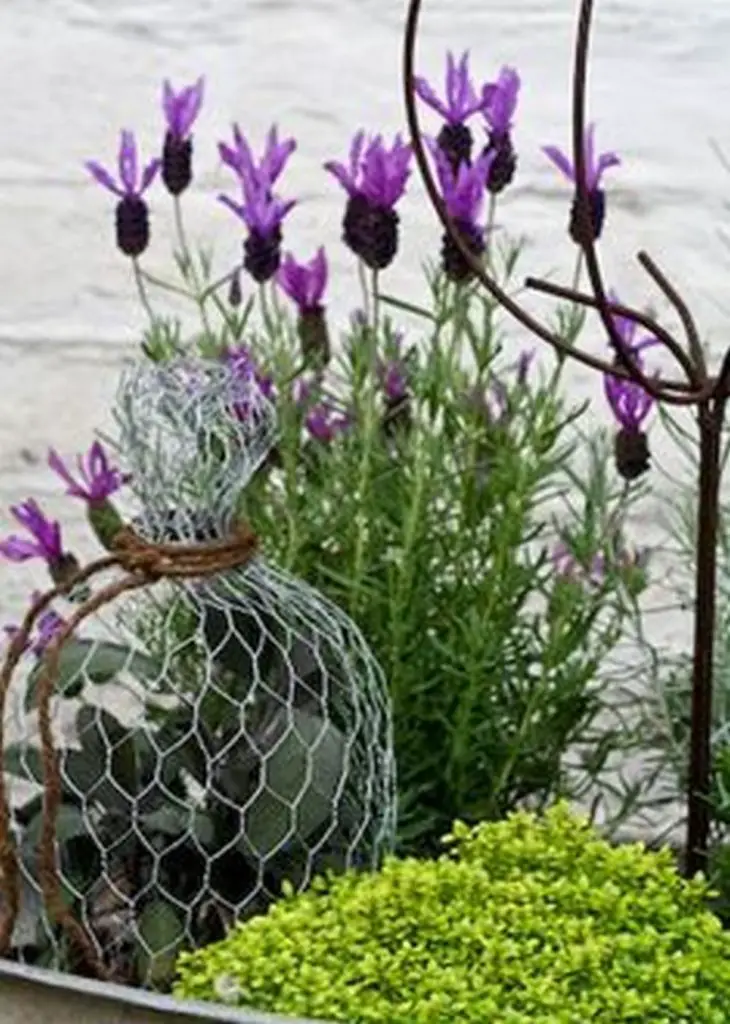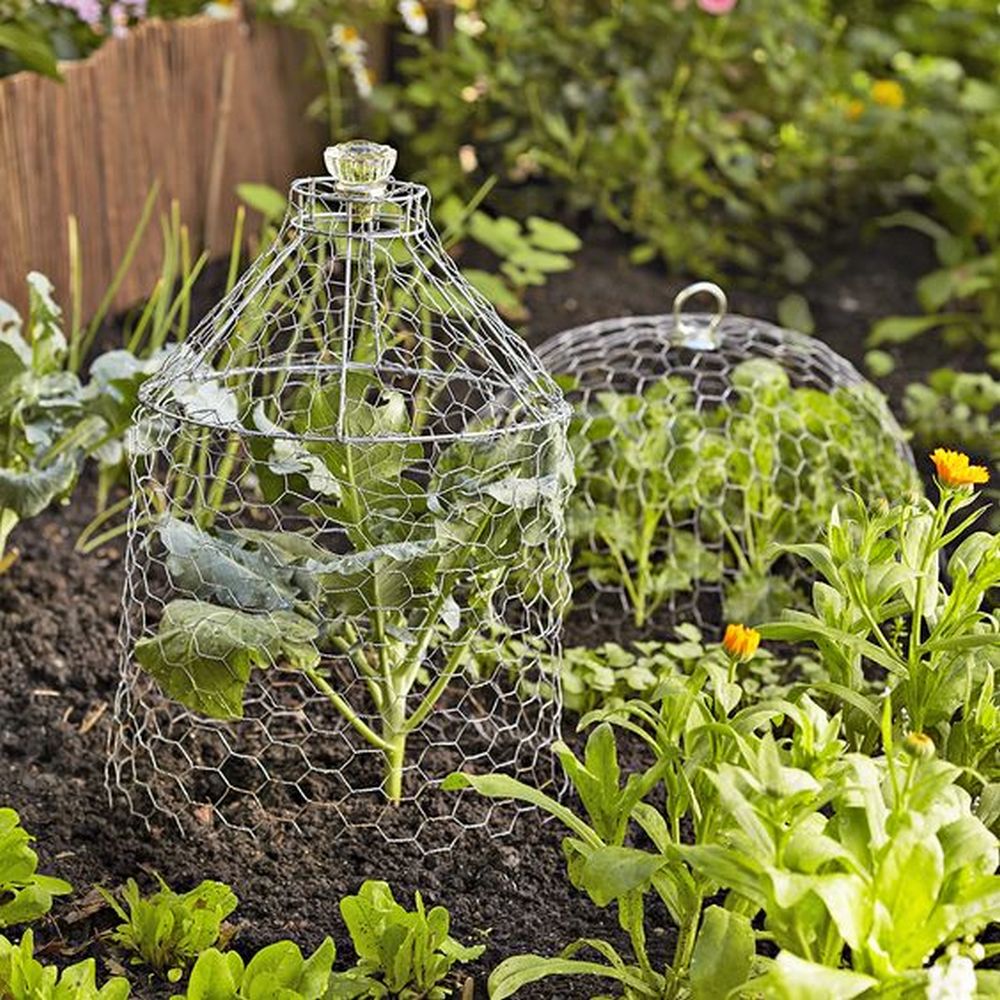
If you’re into gardening, this is for you. This is a simple gardening tool that you may have overlooked. Garden cloches act as a shelter to your plants, protecting them from inclement weather. Additionally, these tools also promote quick germination if you’ve just planted some seeds. Basically, garden cloches are like miniature greenhouses.
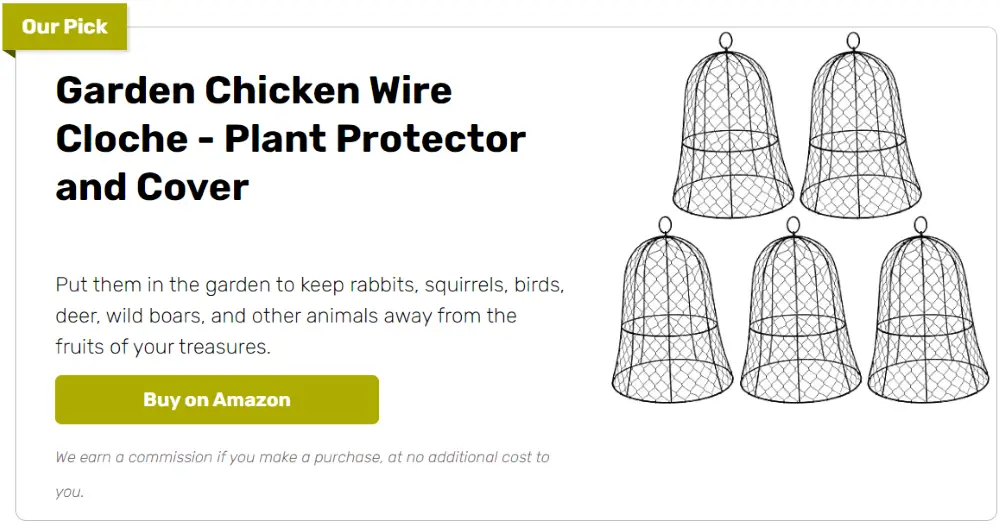
We have a lot of pets roaming around the garden. Most of the time, they nibble on my plants. I’ve just planted some eggplant and tomato seedlings and I want to see them grow to their ripe, full age. As a form of protection, I made some garden cloches – easily one of the best decisions I’ve made.
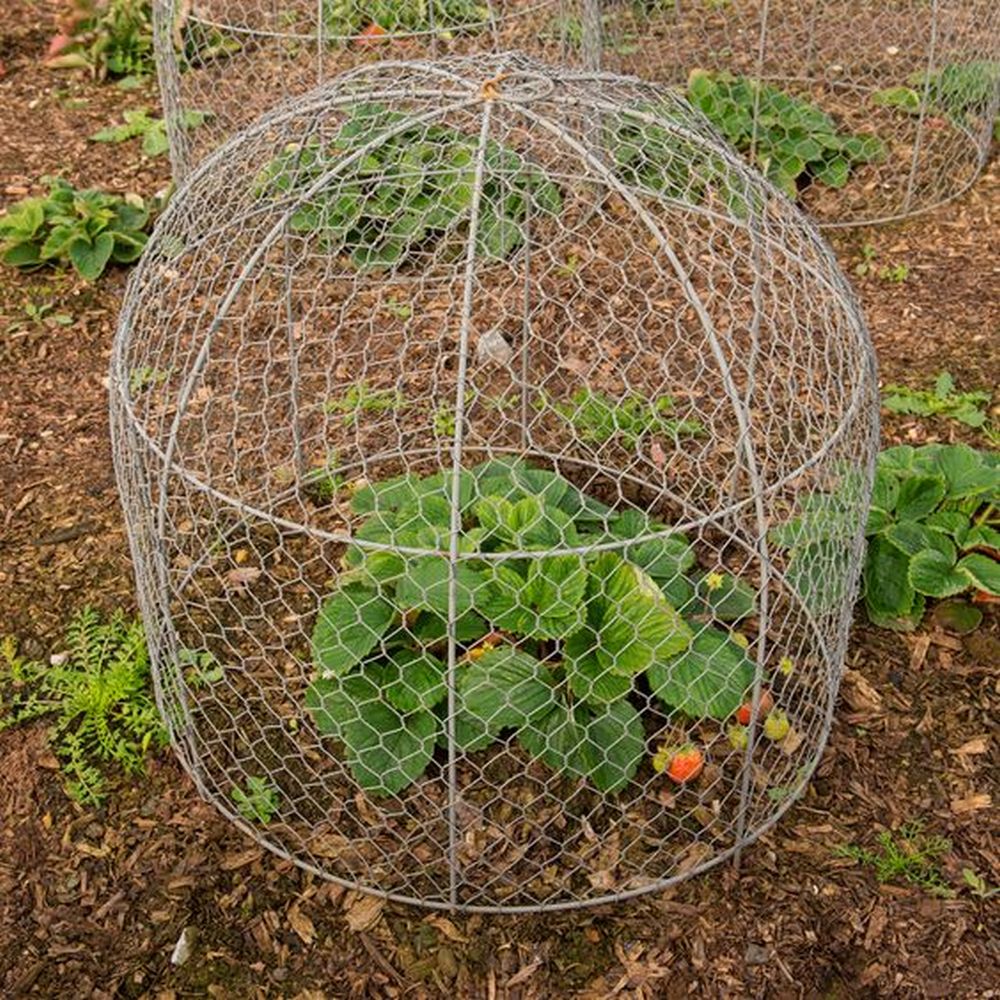
Several versions of garden cloches are available today. You can use water jugs, recycle soda or juice bottles, or repurpose salad containers or punch bowls. For this particular project, we’ll be using chicken wires. They’re inexpensive, and a roll could give you more than two dozen of garden cloches, depending on the size that you want.
Craft this DIY project by following our guide below!
Contents
Garden Cloche DIY Guide
Materials:
- Chicken wire
Tools:
- Tape measure
- Wire snips
Instructions
Step 1: Measure and Cut the Chicken Wire
- Decide on the size of the garden cloche you need. A good starting point is about 18 inches in height and 24 inches in diameter, but you can adjust this based on your specific garden needs.
- Use the tape measure to determine the length of chicken wire needed. For a cloche with a 24-inch diameter, you’ll need a piece of chicken wire approximately 75 inches long (to account for the circumference).
- With the wire snips, cut the chicken wire to your measured length. Be sure to wear gloves to protect your hands from sharp edges.
Step 2: Form the Cloche Shape
- Roll the cut piece of chicken wire into a cylinder shape that matches the dimensions you planned for your cloche.
- Secure the edges where the chicken wire meets by twisting the wire ends together. This may require some bending and manipulation to ensure a snug fit and maintain the shape.
Step 3: Create the Dome Top
- At one end of the cylinder, begin bending the chicken wire inward to form a dome-like top. Work your way around the circumference, gradually pushing the wire in and down to create a smooth dome.
- Once you’ve achieved the dome shape, use the wire snips to trim any excess wire at the top, leaving enough to twist and secure the ends to create a smooth finish.
Step 4: Secure the Edges
- Check the bottom edge of the cloche to ensure there are no sharp points that could harm you or your plants. Bend any sharp ends inward or trim them as needed.
- If the top of your dome has loose ends, twist them together or fold them down to avoid any sharp points.
Step 5: Place the Cloche Over Your Plants
- Carefully position your garden cloche over the plants you wish to protect. Press the bottom edge lightly into the soil to secure it and to help prevent small animals from getting underneath.
- If necessary, you can use additional garden stakes or wires to anchor the cloche, ensuring it stays in place during windy conditions.
Benefits of Using Garden Cloches
Garden cloches offer a simple yet effective way to protect and nurture young plants. They act like mini-greenhouses, shielding plants from external threats while creating an ideal growth environment. Here’s a closer look at the benefits of using garden cloches in your garden.
Protection from Weather
Garden cloches safeguard against unpredictable weather elements, providing a stable and controlled environment for plant growth. Late frosts can be particularly detrimental to young plants, which are sensitive to sudden drops in temperature.
Cloches trap heat, ensuring the air around the plants remains warm even when outside temperatures fall. During periods of heavy rain, they prevent water from directly hitting the plants, minimizing the risk of root rot and soil compaction.
Similarly, strong winds can break stems and dislodge young plants. Gardeners can shield their vulnerable plants from these conditions using cloches, significantly increasing their survival rate and health.
Pest and Animal Barrier
Cloches offer an effective solution to one of gardeners’ most common challenges: invasions by pests and animals. By acting as a physical barrier, cloches block access to young plants from various garden pests, including aphids, slugs, and caterpillars, which can cause significant damage.
They also deter larger animals, such as birds, rabbits, and deer, which may be attracted to the tender shoots of new plants. This protection is especially important during the critical early stages of growth when plants are most susceptible to damage.
By preventing access, cloches help ensure that plants can grow without the added stress of being eaten or damaged, leading to healthier and more productive gardens.
Climate Control
Garden cloches play a crucial role in managing the microclimate around young plants. By trapping sunlight, they increase the temperature within their confines, creating a warm and stable environment that promotes healthy plant growth. This effect is particularly beneficial during the early stages of a plant’s life, such as seed germination, when warmth is a critical factor for success.
Additionally, maintaining higher temperatures can significantly extend the growing season. Gardeners can start their planting season earlier in the spring, as the cloches protect seedlings from the cold.
Similarly, in the fall, plants can continue to thrive under the protection of cloches, even as the outside temperatures drop. This extended growing season allows for a longer harvest period, increasing the yield and variety of crops that can be grown in a single year.
Enhanced Plant Hydration
Maintaining optimal moisture levels is essential for the growth and health of young plants. Garden cloches contribute significantly to this aspect by creating a humid environment that minimizes water loss.
The enclosed space under a cloche traps moisture from both soil evaporation and plant transpiration, creating a cycle of condensation and rehydration. This process ensures that plants have access to consistent moisture, which is especially important during periods of low rainfall or in regions prone to dry conditions.
As a result, gardeners find that they need to water their plants less frequently, conserving water and reducing the time spent on garden maintenance. This consistent moisture availability supports healthy root development and plant growth, leading to more resilient and productive gardens.
Prevention of Soil Erosion
Soil erosion is a significant concern for gardeners, as it can lead to the loss of topsoil and the vital nutrients plants need to thrive. Garden cloches offer a practical solution to this problem. By covering plants, they act as a shield against the direct impact of heavy rainfalls, which can displace soil and wash away the essential nutrients and organic matter that young plants rely on.
This protection helps maintain soil integrity and ensures that nutrients remain where they are most needed, around the roots of plants. Furthermore, the stabilization of the soil structure promotes better root development, as roots can grow more easily in soil that is not compacted or eroded. This creates a healthier environment for plants to absorb water and nutrients more efficiently, leading to stronger, more vigorous growth.
Ease of Use and Versatility
One of the most appealing aspects of garden cloches is their simplicity and flexibility. Gardeners of all skill levels can use cloches effectively, as they require no complex setup or maintenance.
They can be quickly placed over individual plants or rows of seedlings and just as easily removed when conditions improve or plants outgrow them. This ease of use makes garden cloches a highly adaptable tool in garden management, allowing gardeners to respond promptly to changing weather conditions or to provide targeted protection to vulnerable plants.
Additionally, the versatility of garden cloches extends to the variety of plants they can protect. Whether it’s safeguarding the tender shoots of vegetable seedlings, preserving the delicate blooms of flowers, or providing a warmer environment for fruit-bearing plants, garden cloches can be used across the garden. This wide-ranging applicability makes them an indispensable tool for gardeners looking to protect their plants and enhance their garden’s productivity.
Incorporating garden cloches into your gardening routine can significantly enhance the survival rate and growth of your young plants. With their ability to protect, shield, and nurture, garden cloches are an invaluable tool for gardeners looking to optimize their garden’s productivity.
Click on any image to start the lightbox display. Use your Esc key to close the lightbox.






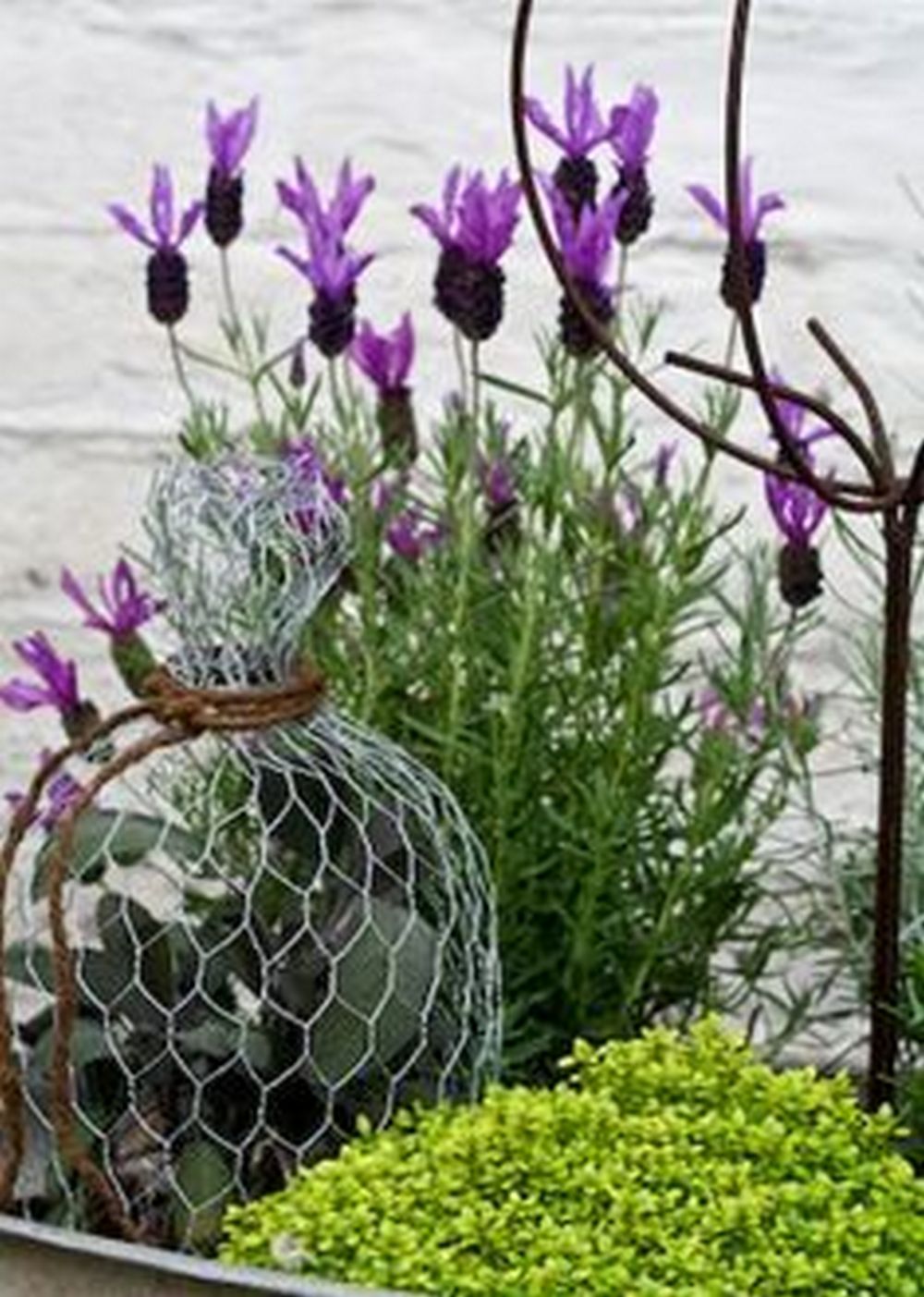

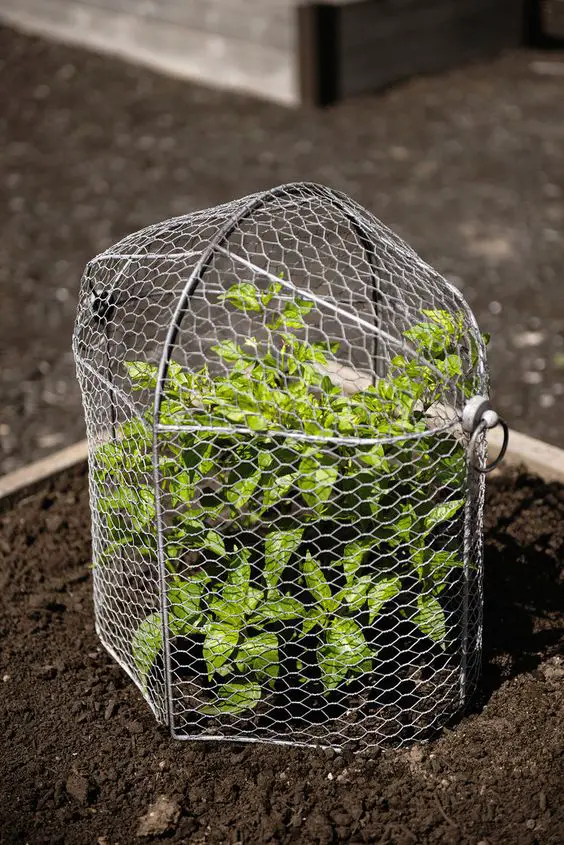
Troubleshooting Common Issues
Using garden cloches is a fantastic way to protect your young plants and extend your growing season. However, like any gardening tool, you might encounter some issues along the way. Here’s how to troubleshoot common problems associated with garden cloches.
Overheating
Even though garden cloches create a warm environment that can boost plant growth, too much heat can be detrimental. If you notice your plants wilting or showing signs of heat stress, such as yellowing or curled leaves, it’s time to act.
- Solution: Ensure proper ventilation by partially lifting the cloche during the hottest part of the day or by creating small ventilation holes at the top. Monitoring the temperature inside the cloche can help you adjust as needed.
Condensation and Lack of Air Circulation
High humidity inside a cloche is great for seed germination but can lead to issues like mold and mildew if air circulation is poor.
- Solution: Improve air circulation by opening the cloche slightly at the base or creating additional air vents. This can reduce excess moisture while still protecting your plants.
Pests Inside the Cloche
Sometimes, pests can get trapped inside a cloche or find a small opening to squeeze through, posing a threat to your enclosed plants.
- Solution: Regularly inspect the inside of your cloche for pests. If you find any, remove them manually and check for gaps or holes in the cloche. Repair any openings with additional chicken wire or mesh to keep pests out.
Damage from Strong Winds
Garden cloches are lightweight and can be damaged or blown away by strong winds if not properly secured.
- Solution: Anchor your cloches firmly in the ground. You can use heavy stones, bricks, or garden stakes around the base to keep them in place during windy conditions.
By addressing these common issues, you can ensure that your garden cloches continue to provide the optimal protection and environment for your young plants to thrive.
Maintenance and Care for Garden Cloches
Garden cloches are essential tools for protecting young plants, but regular maintenance and care are necessary to ensure they remain effective. Proper upkeep will extend their lifespan and keep your plants safe from harm.
Cleaning
Maintaining the cleanliness of your garden cloches is not only about keeping them looking good but also about ensuring they function effectively. Clean cloches allow maximum light to reach your plants, which is essential for their growth and health. Furthermore, a clean environment reduces the risk of disease transmission among your plants.
Routine Cleaning
Regular cleaning should be part of your garden maintenance routine. Over time, cloches can accumulate dirt, algae, and other residues that can significantly reduce the amount of sunlight that penetrates through. This can affect the growth of your plants. To clean your cloches, use a mild soapy water solution and a soft brush.
Gently scrub the surface of the cloches to remove any buildup without damaging the material. After scrubbing, make sure to rinse the cloches thoroughly with clean water to remove any soap residue. This process should be done periodically, especially if you notice a buildup on the cloches, to ensure your plants receive enough light.
Disinfecting
While routine cleaning helps in maintaining the transparency and appearance of your garden cloches, disinfecting them is crucial for disease control. At the end of the growing season, or when you’re preparing to use the cloches for new plants, take the time to disinfect them.
A simple yet effective disinfecting solution can be made by mixing 1 part bleach with 9 parts water. This solution is effective in killing off most pathogens that can linger on the surface of your cloches, including bacteria, fungi, and viruses that can harm your plants.
Apply the bleach solution evenly over the cloches, allowing it to sit for a few minutes to ensure it penetrates any biofilm or residue. Afterward, rinse the cloches off with water to remove any traces of bleach.
This step is vital to prevent any potential harm to your plants from the disinfectant. Proper disinfection helps in preventing the spread of diseases from one season to the next, safeguarding the health of your garden.
Inspection and Repair
To ensure your garden cloches continue to provide optimal protection for your plants, it’s essential to conduct regular inspections. These inspections can reveal damage that, if left unaddressed, could compromise the effectiveness of the cloches in safeguarding your plants against weather, pests, and diseases.
Holes and Gaps
Over time, garden cloches can sustain damage that results in holes or gaps. These openings can allow pests to enter and harm your plants, reducing the cloche’s effectiveness as a barrier. For cloches made from chicken wire, inspect for areas where the wire may have broken or come apart, and use additional chicken wire to patch these spots.
Secure the patch in place by twisting wire ends together or using wire ties for a tight fit. For plastic cloches, clear tape designed for outdoor use can seal holes and cracks effectively. Ensure the tape covers the damaged area completely and extends beyond the edges for a secure seal. This repair not only maintains the structural integrity of the cloche but also ensures continuous pest protection.
Structural Integrity
The physical structure of wire cloches is crucial for their function. Over time, they may become bent or distorted due to external pressures, such as strong winds or accidental impacts. Inspect your wire cloches for any signs of deformation.
If you find areas that have been pushed out of shape, use your hands to gently bend the wire back into its original form. It’s important to do this carefully to avoid creating additional damage. For severely bent cloches, you may need to use pliers for more precise adjustments. Restoring the cloche’s shape is vital for ensuring it can cover your plants effectively and continue to provide the necessary protection.
Proper Storage
Effective storage of garden cloches when they’re not in active use is crucial for preserving their condition and functionality. Proper storage techniques protect cloches from unnecessary wear and tear, ensuring they’re ready for use in the next season without needing repairs or replacements.
Dry Before Storing
Moisture is one of the main enemies of stored garden equipment, including cloches. Before putting your cloches away, make sure they are completely dry. This is especially important for plastic cloches, as trapped moisture can create an environment conducive to mold and mildew growth, which could weaken the structure or create health hazards for your plants when reused.
For wire cloches, ensuring dryness before storage is essential to prevent rusting, which can compromise their structural integrity. You can air-dry them outdoors on a sunny day or wipe them down with a dry cloth to remove any lingering moisture.
Safe Storage Area
Choosing the right storage location is key to prolonging the life of your garden cloches. The ideal storage area should be dry and shaded, protecting the cloches from elements that can cause degradation, such as direct sunlight, rain, or snow.
Ultraviolet (UV) rays from the sun can weaken plastic cloches over time, making them brittle and more prone to cracking. Similarly, exposure to constant moisture can accelerate rusting in wire cloches and promote fungal growth of any type.
Conclusion
Garden cloches are invaluable tools for gardeners looking to protect and nurture their young plants. By understanding and implementing the right cleaning, inspection, repair, and storage practices, you can ensure that your cloches serve their purpose effectively year after year. Regular maintenance not only extends the life of your garden cloches but also enhances your garden’s overall health and productivity.
Check out our removable raised garden fence project next for more garden projects!

